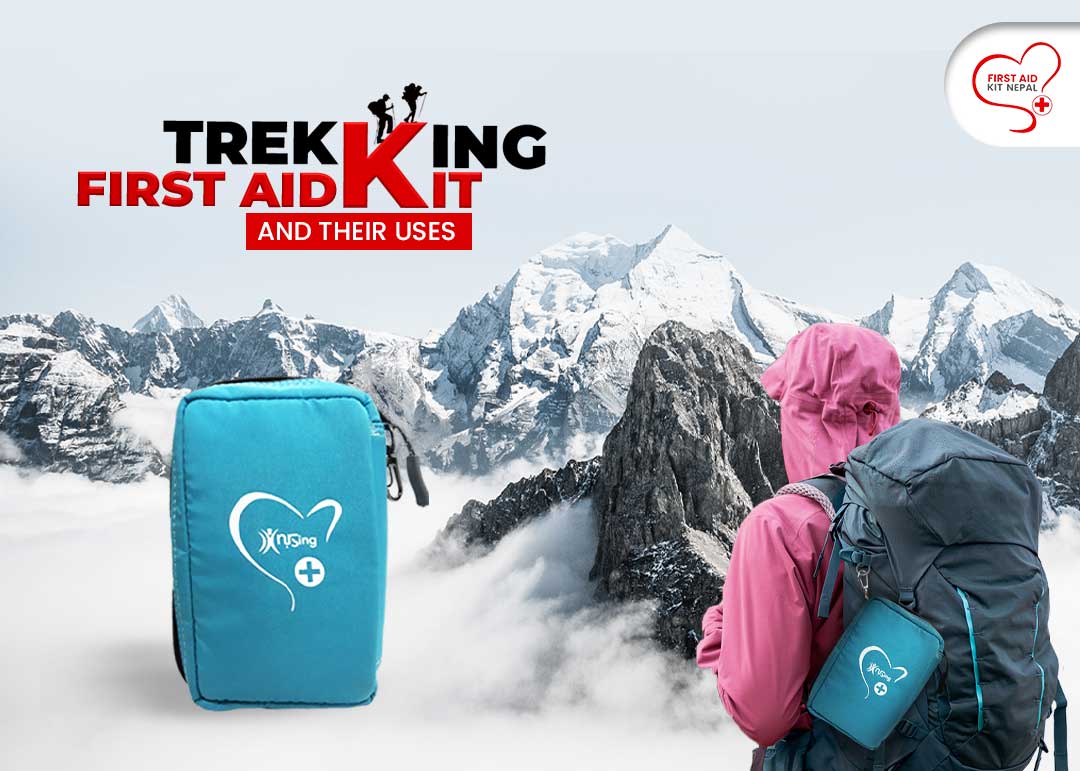Trekking in the great outdoors is an exhilarating and adventurous experience, but it comes with its share of risks. A well-equipped trekking first aid kit is essential, whether you’re an experienced hiker or a novice explorer. This guide will explore the importance of a trekking first aid kit and its various usages to ensure a safe and enjoyable journey.
Why Do You Need a Trekking First Aid Kit?
Unforeseen Injuries: When you’re in the wilderness, accidents can happen. You may trip over uneven terrain, get bitten by insects, or encounter wildlife that could pose a threat.
Remote Locations: Many trekking trails are far from medical facilities, making it crucial to have immediate access to basic medical supplies.
Quick Response: A well-prepared first aid kit can help you provide immediate care before seeking professional medical help.
What to Include in Your Trekking First Aid Kit:
Basic Supplies:
Adhesive bandages of various sizes
Sterile gauze pads and adhesive tape
Scissors, tweezers, and safety pins
Antiseptic wipes and hand sanitizer
Disposable gloves
Wound Care:
Wound-cleaning solution (like hydrogen peroxide)
Wound closure strips or butterfly bandages
Antibiotic ointment
Sterile saline solution for eye irrigation
Medications:
Pain relievers
Antihistamines for allergic reactions
Antacids
Any personal prescription medications
Emergency Tools:
Digital thermometer
CPR face shield or mask
Emergency whistle
Small flashlight with extra batteries
Usages of Trekking First Aid Kit:
Cuts and Scrapes: Use adhesive bandages, antiseptic wipes, and antibiotic ointment to clean and cover minor wounds.
Blisters: Moleskin or blister pads can provide relief from friction-induced blisters.
Sprains and Strains: Elastic bandages and pain relievers can help manage pain and support injured limbs.
Insect Bites and Stings: Use antihistamines and hydrocortisone cream to alleviate itching and swelling.
Eye Injuries: A sterile saline solution is crucial for flushing the eyes in case of debris or chemical exposure.
Allergic Reactions: An EpiPen and antihistamines can be lifesavers in severe allergic reactions.
Heat and Cold-Related Issues: Sunscreen and lip balm protect against sunburn, while emergency blankets can help retain body heat in cold conditions.
Bleeding and Major Injuries: Wound-cleaning solution, gauze, adhesive tape, and a first aid manual are essential for managing more serious injuries until professional help arrives.
A well-prepared trekking first aid kit is your best friend on the trail. By including the necessary supplies and knowing how to use them, you can ensure a safer and more enjoyable trekking experience. Remember, it’s not just about having the kit, it’s about knowing when and how to use it. To buy a quality trekking kit in Nepal, reach First Aid Kit Nepal or NRS Nursing. One can also get basic first-aid kit training from them. Stay safe, and may your adventures be filled with awe and wonder as you explore the great outdoors!


